The Multilingual Edge: How Language Skills Drive Economic Value and Shape the EdTech Market
Have you ever considered the true economic value of acquiring a new language? In our increasingly interconnected global economy, language proficiency is far more than a personal hobby; it’s a tangible asset, a strategic investment in human capital that can significantly impact your career and financial future. This article will explore the burgeoning market of language education, examining the innovative platforms shaping learning methodologies, the diverse career opportunities unlocked by multilingualism, and the underlying economic value propelling this dynamic sector forward. We’ll delve into the business models, technological advancements, and strategic approaches that define the modern language learning landscape, offering insights into its financial implications for both individuals and corporations. 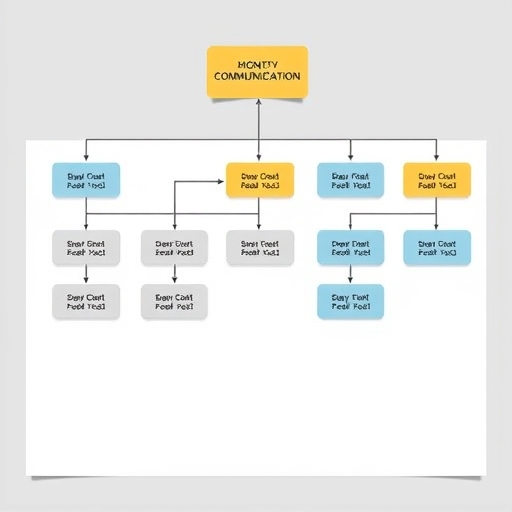
The Strategic Investment: How Language Skills Boost Your Career and Earning Potential
Investing time and effort into learning a foreign language can yield significant returns, much like any other strategic investment. It’s about enhancing your “human capital”—the skills, knowledge, and experience that make you valuable in the job market. When you master a new language, you’re not just learning words; you’re opening doors to new markets, cultures, and career paths that can lead to higher earning potential and greater professional fulfillment. 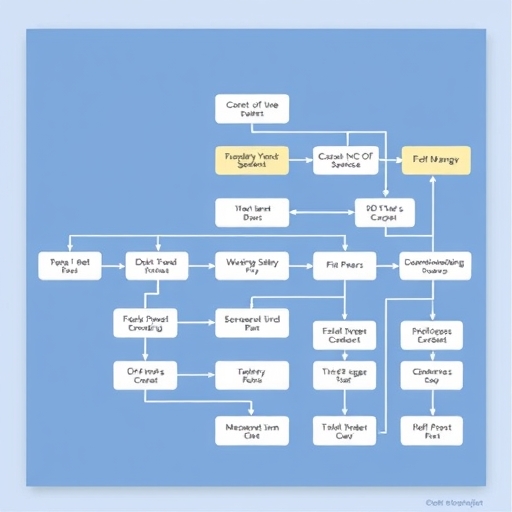
Consider the diverse roles where multilingual skills are highly sought after. These positions often command better salaries and offer unique opportunities for growth:
- Language Teacher/Tutor: With the global demand for English language learning, skilled tutors are always in demand, both online and in person. Platforms like Preply connect tutors with students worldwide.
- Interpreter/Translator: Bridging communication gaps in legal, medical, or business settings. Companies like Day Interpreting and Day Translations rely heavily on these experts.
- Content Creator: From YouTubers and bloggers to authors writing for international audiences, multilingual creators can reach broader markets.
- Localization Specialist: Adapting products, services, and marketing materials to fit local linguistic and cultural nuances. This is crucial for global businesses expanding into new territories.
- Brand Specialist/Community Representative: Managing a brand’s presence in international markets, interacting directly with customers in their native language.
Beyond specific roles, possessing strong language skills signals adaptability, a global mindset, and enhanced problem-solving abilities—qualities highly valued by employers. It’s no wonder that proficiency in languages like English is often a prerequisite for international business roles, giving you a distinct competitive edge.
Furthermore, formal certification of your language skills can significantly validate your proficiency for academic or professional goals. Tests like the IELTS (International English Language Testing System), TOEFL (Test of English as a Foreign Language), and CAE (Cambridge English: Advanced) are globally recognized benchmarks that can unlock opportunities for study abroad, immigration, or employment in international companies. These certifications represent a clear objective measure of your linguistic investment.
The benefits of multilingualism extend beyond specific job titles, influencing overall professional trajectory and personal development. Individuals who invest in language learning often find themselves enjoying broader career horizons and deeper cultural understanding.
| Benefit Category | Description | Impact on Career |
|---|---|---|
| Increased Earning Potential | Multilingual professionals often command higher salaries due to specialized demand. | Access to premium roles, global mobility, and better compensation packages. |
| Enhanced Market Access | Ability to engage with broader customer bases and international partners. | Crucial for international sales, marketing, business development, and cross-cultural negotiations. |
| Cognitive Advantages | Improved problem-solving, decision-making, multitasking, and creativity. | Higher performance in complex roles, leadership potential, and enhanced adaptability in dynamic environments. |
| Cultural Sensitivity | Deeper understanding and appreciation of diverse cultures. | Better collaboration in diverse teams, stronger international relationships, and reduced cultural misunderstandings. |
Investing in language skills provides a clear path to greater professional fulfillment and financial security. It equips individuals with the tools needed to thrive in a globalized workforce.
Navigating the EdTech Landscape: Business Models and Value in Language Platforms
The language education market is a vibrant ecosystem, constantly evolving with technological advancements and diverse offerings. From free apps to premium subscription models, companies are innovating to capture learners’ attention and provide effective pathways to fluency. Let’s look at how these platforms operate and create value. 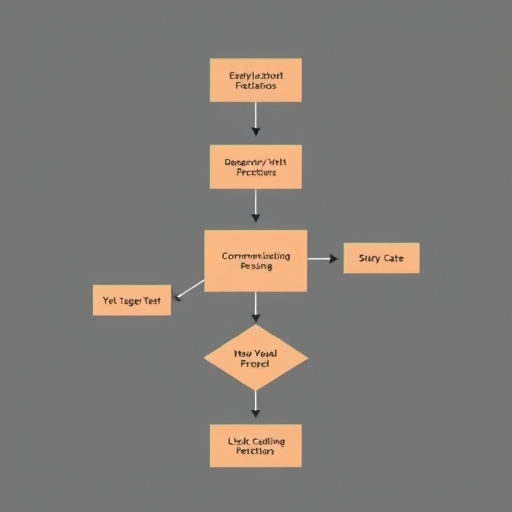
Leading providers like Innovative Language Learning, Leonardo English, Duolingo, and Preply showcase a competitive landscape. While Duolingo might be famous for its free, gamified approach, many platforms offer advanced features and personalized experiences through various business models, primarily subscriptions.
Take, for instance, Innovative Language Learning’s “Premium PLUS” subscription. This isn’t just a basic package; it’s designed as a “golden ticket” for accelerated learning, packed with features that justify its higher price point. What value does such a premium offering provide?
- Unlimited Lesson Access: Comprehensive libraries of audio and video lessons.
- Voice Recording Tools: For instant feedback on pronunciation.
- Spaced-Repetition System (SRS) Flashcards: An efficient method for vocabulary retention.
- Weekly Homework: Structured practice to reinforce learning.
- Personal Language Instructor: One-on-one guidance and customized feedback, a significant investment in personalized education.
The integration of Artificial Intelligence (AI) is another transformative trend. Platforms are leveraging AI for personalized feedback, intelligent vocabulary building, and even creating AI-powered conversation partners. Leonardo English, for example, has offered an “Learn English with AI Challenge,” demonstrating how technology can enhance the learning experience by providing constant, tailored interaction. These AI advancements not only improve learning efficiency but also represent a significant area of investment for EdTech companies, aiming to scale personalized education.
Beyond subscriptions, platforms employ strategic pricing and promotional tactics to attract new users. You might encounter special offers like “1€ private English lessons” to encourage initial engagement, hoping to convert trial users into long-term subscribers. The diversity in content formats—from podcasts and videos to textbooks and apps like LingQ—ensures that learners can find resources that fit their preferred style, further expanding the market’s reach.
Modern EdTech platforms are constantly innovating, offering a wide array of features designed to cater to different learning styles and proficiency levels. These features contribute significantly to the overall value proposition for learners.
| Key Feature | Description | Benefit to Learner |
|---|---|---|
| AI-Powered Feedback | Instant correction on pronunciation, grammar, and sentence construction. | Accelerates learning by providing real-time, personalized guidance and error correction. |
| Gamification | Incorporation of points, streaks, leaderboards, and virtual rewards. | Increases motivation, engagement, and consistency in daily learning habits. |
| Community Forums & Tutors | Platforms for interaction with other learners, native speakers, and professional tutors. | Provides practice opportunities, cultural exchange, and personalized support. |
| Spaced Repetition Systems (SRS) | Algorithms that optimize review intervals for vocabulary and grammar. | Maximizes retention of new information by presenting it at optimal memory points. |
| Diverse Content Formats | Access to podcasts, videos, interactive exercises, digital textbooks, and apps. | Catters to various learning preferences and keeps the learning process fresh and engaging. |
The strategic development of these features highlights the EdTech market’s commitment to making language acquisition more accessible, efficient, and enjoyable for a global audience.
Mastering Language Acquisition: Effective Methodologies for Maximizing Your Investment
To truly realize the economic value of language learning, it’s crucial to approach it with a strategic mindset. Just like any successful investment, achieving fluency requires clear goals and effective methodologies. We advocate for a structured approach that tackles the challenge head-on, preventing decision fatigue and ensuring consistent progress. 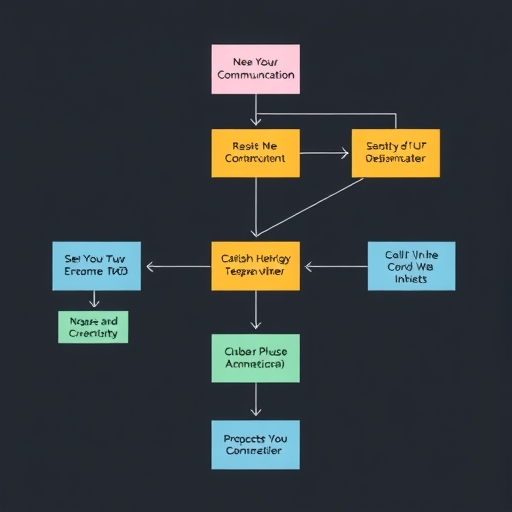
One powerful framework involves distinguishing between two types of goals:
- Vision Goals: These are your inspirational, long-term aspirations. Perhaps you dream of living in Spain, securing a global business role, or becoming fluent in Japanese. These are your “why.”
- Path Goals: These are the specific, actionable, short-term steps that lead to your vision. They represent your daily or weekly commitments.
For your Path Goals, we strongly recommend applying the SMART Goal criteria:
| Criterion | Description | Example for Language Learning |
|---|---|---|
| Specific | Clearly defined, not vague. | “Learn 20 new vocabulary words” instead of “Learn more words.” |
| Measurable | Quantifiable progress. | “Complete 3 listening exercises” instead of “Practice listening.” |
| Achievable | Realistic given your time and resources. | “Write a 100-word paragraph” instead of “Write a novel.” |
| Relevant | Aligns with your Vision Goal. | “Practice Business English phrases” if your goal is a corporate role. |
| Time-bound | Has a deadline. | “Practice speaking for 15 minutes daily for the next week.” |
A structured learning plan, built on these SMART Path Goals, is essential. It should incorporate the core skills of listening, speaking, reading, and writing, ensuring a balanced development. Variety in your daily tasks can combat monotony, keeping your learning fresh and engaging.
Immersion is another incredibly powerful technique, replicating how you learned your first language. This means surrounding yourself with the language as much as possible—through media, interaction, and even cultural integration. Learning vocabulary in context, rather than isolated lists, significantly boosts retention and makes your language use more natural. Active learning techniques are key to this process:
- Active Listening: Don’t just hear; actively engage with audio content, transcribing what you hear.
- Spaced-Repetition System (SRS) Flashcards: Tools like Anki or integrated SRS features in platforms help you review vocabulary and grammar at optimal intervals.
- Writing Practice: Even short daily journal entries or responses to prompts can greatly improve your written skills.
To further enhance your language acquisition journey, consider these practical tips:
- **Find a Language Partner:** Practicing with a native speaker or fellow learner provides real-time interaction and feedback, crucial for developing conversational fluency.
- **Engage with Authentic Media:** Watch movies, listen to music, and read books in your target language to expose yourself to natural speech patterns and cultural contexts.
- **Keep a Language Journal:** Regularly jot down new vocabulary, grammar points, or even daily thoughts in the target language to reinforce learning and track progress.
- **Don’t Fear Mistakes:** Embrace errors as learning opportunities. Fluency comes from consistent practice, not perfection.
By adopting these strategic approaches, you are not merely studying; you are making a calculated investment in your linguistic capabilities, maximizing your chances of achieving true fluency and unlocking its full economic potential.
Understanding the stages of language proficiency can also help in setting realistic expectations and tailoring your learning strategy effectively.
| Proficiency Stage | Description | Typical Focus Areas |
|---|---|---|
| Beginner (A1-A2) | Can understand and use familiar everyday expressions and very basic phrases; introduce themselves and others. | Core vocabulary, basic grammar (present tense), common greetings, simple question/answer. |
| Intermediate (B1-B2) | Can understand the main points of clear standard input on familiar matters; can produce simple connected text. | Expanding vocabulary, more complex sentence structures, conversational fluency, expressing opinions. |
| Advanced (C1-C2) | Can understand a wide range of demanding, longer texts, and recognize implicit meaning; express ideas fluently and spontaneously. | Idioms, subtle grammar nuances, academic/professional discourse, nuanced understanding of cultural contexts. |
Progressing through these stages requires dedication and a willingness to step outside your comfort zone, but each level unlocked brings you closer to your ultimate language goals.
The Core Pillars of Fluency: Building Robust Vocabulary, Grammar, and Pronunciation
Achieving fluency in any language, especially English, relies on mastering its fundamental components: vocabulary, grammar, and pronunciation. These are the building blocks that allow you to communicate effectively and confidently, directly enhancing your perceived and actual competence in professional or academic settings.
Expanding your vocabulary is a continuous journey. It’s not just about memorizing single words; it’s about understanding their nuances, common collocations, idioms, and phrasal verbs. For instance, knowing common Business English terminology can immediately boost your credibility in a corporate environment. We encourage learning words in context—seeing them used in sentences, stories, or real-life conversations—as this significantly aids retention and natural usage. Why do we emphasize context? Because it helps you grasp the subtle meanings and appropriate situations for each word, much like understanding the market conditions before making a financial decision.
Grammar, often considered daunting, is the skeleton of a language. Without a solid grammatical foundation, even extensive vocabulary can lead to miscommunication. Many learners struggle with complex verb tenses, prepositions, or sentence structures in English. Platforms often offer targeted courses or challenges to demystify these rules, making them more accessible. For example, specific challenges on Leonardo English focus on tackling tricky grammar points or understanding the intricacies of British English versus other dialects.
Finally, clear pronunciation is vital for effective speaking skills. You might have perfect grammar and a rich vocabulary, but if your pronunciation is difficult to understand, your message can get lost. We recommend several techniques:
- Minimal Pairs: Practicing pairs of words that differ by only one sound (e.g., “ship” and “sheep”) helps refine your ability to distinguish and produce subtle sounds.
- Connected Speech Practice: Native speakers often link words together, making speech sound faster and different from individual words. Practicing this helps both your listening comprehension and your natural speaking rhythm.
- Shadowing: Listening to a native speaker and immediately attempting to repeat what they say, mimicking their intonation, rhythm, and speed. This is an excellent way to improve both pronunciation and fluency.
It’s also worth noting the importance of recognizing dialectal differences. For example, if you’re learning Spanish, deciding whether to focus on Peninsular Spanish (from Spain) or Mexican Spanish (common in Latin America) can impact your learning resources and future opportunities. This choice is a strategic one, much like choosing a specific market segment for an investment, and should align with your long-term goals and intended use of the language.
Beyond the Classroom: Corporate Investment in Multilingual Teams and Global Engagement
While individuals invest in language learning for personal and professional growth, businesses also make significant investments in fostering multilingual environments. In our globalized world, companies understand that effective global communication and cultural understanding are not just beneficial; they are essential for market expansion, strong international relations, and overall corporate success. This often translates into tangible investments in their workforce and operational strategies.
For a company operating across borders, having employees with strong foreign language skills can directly impact their bottom line. A localization specialist, for example, ensures that product interfaces and marketing campaigns resonate culturally, preventing costly missteps and maximizing market penetration. Similarly, a brand specialist who can genuinely connect with international customers in their native tongue builds trust and strengthens brand loyalty, which is invaluable in competitive markets.
Beyond direct business functions, companies often invest in their employees’ well-being and team cohesion, recognizing that a positive work environment indirectly contributes to productivity and talent retention. For instance, the data shows examples of Innovative Language Learning organizing various team-building events:
- Hiking Adventures: Like trips to Mt. Mitake in Tokyo, fostering camaraderie outside of work.
- Snow Sports: Team outings to places like Yuzawa Niigata for shared experiences and relaxation.
- “Big Cleaning Day”: A collaborative effort to maintain the workplace, promoting shared responsibility.
- Thanksgiving Lunches and Year-End Parties: Celebrations that build strong relationships among colleagues.
While these might not seem like direct language education investments, they represent a broader commitment to a strong company culture. A happy, cohesive team is more engaged, more productive, and better equipped to handle the complexities of a global business environment, where effective internal and external communication is paramount. This holistic approach to employee development, including support for language skills and cultural sensitivity, is a strategic move that enhances a company’s overall human capital and its capacity to thrive in diverse global markets.
For businesses looking to expand globally, a multilingual workforce offers several strategic advantages that go beyond simple translation services.
| Corporate Advantage | Description | Impact on Business |
|---|---|---|
| Market Penetration | Ability to directly engage with customers in their native languages and understand local nuances. | Increased sales, stronger customer loyalty, and effective global marketing campaigns. |
| Enhanced Negotiation | Improved understanding and trust in international business negotiations. | More favorable deals, reduced misunderstandings, and stronger long-term partnerships. |
| Competitive Edge | Differentiates the company in global markets where competitors may lack linguistic capabilities. | Attracts top international talent, opens new revenue streams, and improves brand reputation. |
| Innovation & Creativity | Diverse linguistic backgrounds often correlate with varied perspectives and problem-solving approaches. | Fosters a more innovative and adaptable company culture, leading to novel solutions. |
These advantages underscore why corporations are increasingly prioritizing language skills as a core component of their global business strategy, seeing it as a direct investment in future growth and resilience.
Conclusion
In summary, the journey of language learning is a multifaceted endeavor with substantial economic value. We’ve seen how investing in multilingual skills can open doors to exciting career opportunities, enhance your earning potential, and position you as a valuable asset in a globalized workforce. The EdTech market, driven by innovative platforms and the integration of AI, continues to offer diverse and effective pathways to fluency, from premium subscriptions to structured learning challenges. By adopting strategic goal-setting and proven methodologies that focus on building robust vocabulary, grammar, and pronunciation, you can maximize your personal investment in language acquisition.
The cultivation of language skills is not just about personal enrichment; it’s a strategic move that yields significant returns for individuals and empowers businesses to navigate and succeed in complex international landscapes. As the world becomes even more interconnected, the multilingual edge will remain a critical driver of both individual success and global economic growth.
Disclaimer: This article is for informational and educational purposes only and should not be considered as direct financial advice. The decision to invest time or money in language learning, or any other educational product, should be based on your personal circumstances, goals, and thorough research.
Frequently Asked Questions (FAQ)
Q: Why are language skills considered a valuable economic asset in today’s world?
A: Language skills are a valuable economic asset because they enhance an individual’s “human capital,” leading to increased earning potential and access to a wider range of global career opportunities. For businesses, multilingual teams facilitate market expansion, improve international relations, and prevent cultural missteps, directly impacting their bottom line and competitiveness.
Q: How do modern EdTech platforms contribute to effective language learning?
A: Modern EdTech platforms revolutionize language learning by offering diverse business models (like subscriptions and freemium), integrating advanced technologies such as AI for personalized feedback and conversation partners, and providing a variety of engaging content formats (podcasts, videos, interactive exercises). They make learning more accessible, efficient, and tailored to individual needs.
Q: What is the importance of setting SMART goals in language acquisition?
A: Setting SMART (Specific, Measurable, Achievable, Relevant, Time-bound) goals is crucial for effective language acquisition because it provides a clear, structured path to fluency. This methodology helps prevent decision fatigue, ensures consistent progress, and allows learners to track their development objectively, maximizing their investment of time and effort.


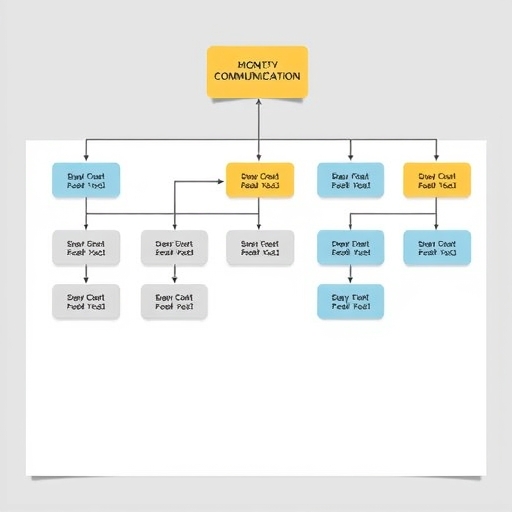
No responses yet